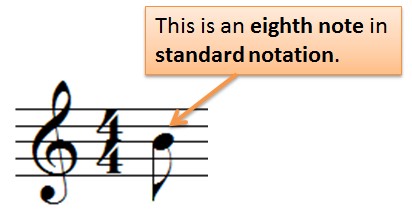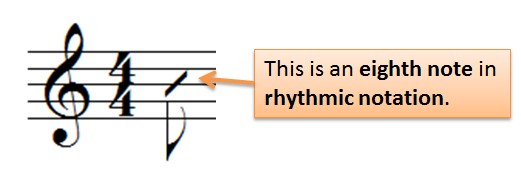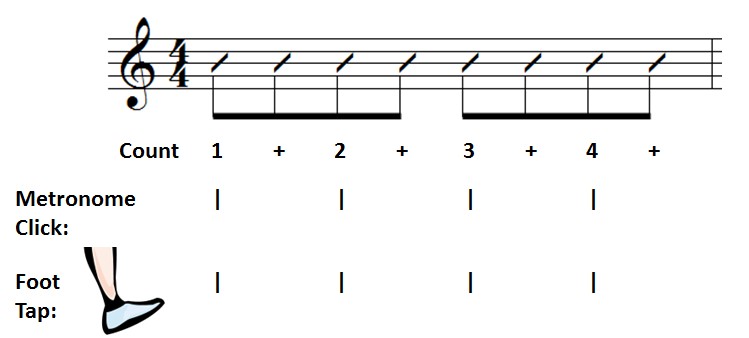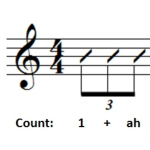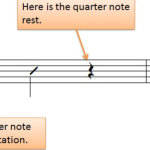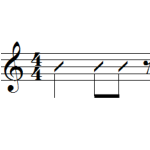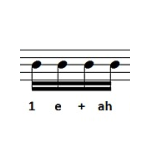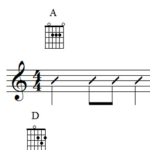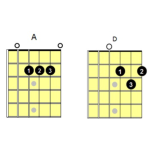Introduction
In the Rhythm Guitar Basic Tutorials 1-6, we looked at whole notes, half notes, quarter notes and their respective rests.
But as you may already be aware, that just scratched the surface of common rhythm patterns that you need to know as a guitar player.
When you play rhythm guitar, some of the most common rhythms you will encounter use eighth notes.
In this tutorial we begin our look at the basics of eighth notes.
Here is what a single eighth note in standard notation looks like:
Here is an eighth note in rhythmic notation:
When eighth notes are in pairs their beams are usually joined.
Counting Eighth Notes
The eighth note is held for ½ of a beat. This means we need to divide the beat into half.
So we count eighth notes as follows:
Here is the same rhythm in rhythmic notation.
How to Use the Metronome for Playing Eighth Notes
As you will recall from Playing Rhythm Guitar: Basics Part 2 – Using a Metronome to Improve Your Sense of Rhythm, the metronome is used to help you build a rock solid sense of rhythm.
The way you use a metronome doesn’t change as you start to practice eighth notes.
The metronome will still mark off beats 1, 2, 3 and 4.
Now it’s time to clap the above eighth note rhythm pattern.
Clap and count out loud and as you do. Be sure to tap your foot in time with the metronome.
Repeat the above example at least ten times before moving on to what follows.
It is crucial that you get the basic eighth note pattern down.
Combining Eighth Notes and Quarter Notes
Now here is the next pattern to practice.
This one switches from quarter notes to eighth notes.
Practice this pattern at slow, moderate and quick speeds.
Don’t go faster than you can accurately perform the passage. Accuracy is the most important factor as you practice these rhythms.
Over the next 7 days, clap and count out loud the example we just looked at.
Practice it whenever and wherever you can.
Bear in mind that you can practice this inconspicuously by lightly tapping on the side of your thigh as you count the rhythm pattern mentally.
Recommended Resource
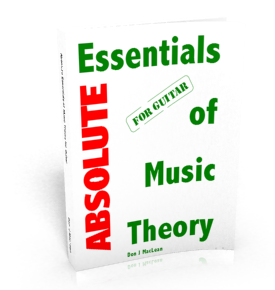 Isn’t it time to get your hands on a proven, fast and easy way to learn the basics of music theory for guitar? The Absolute Essentials of Music Theory for Guitar lays out what you need to know about guitar music theory so it’s crystal-clear.
Isn’t it time to get your hands on a proven, fast and easy way to learn the basics of music theory for guitar? The Absolute Essentials of Music Theory for Guitar lays out what you need to know about guitar music theory so it’s crystal-clear.
Mastering the basics of guitar theory will open up a whole new world for you. You will learn guitar faster and feel and hear big improvements in your guitar playing.
Get started now and take the mystery out of music theory so you can learn guitar faster…

